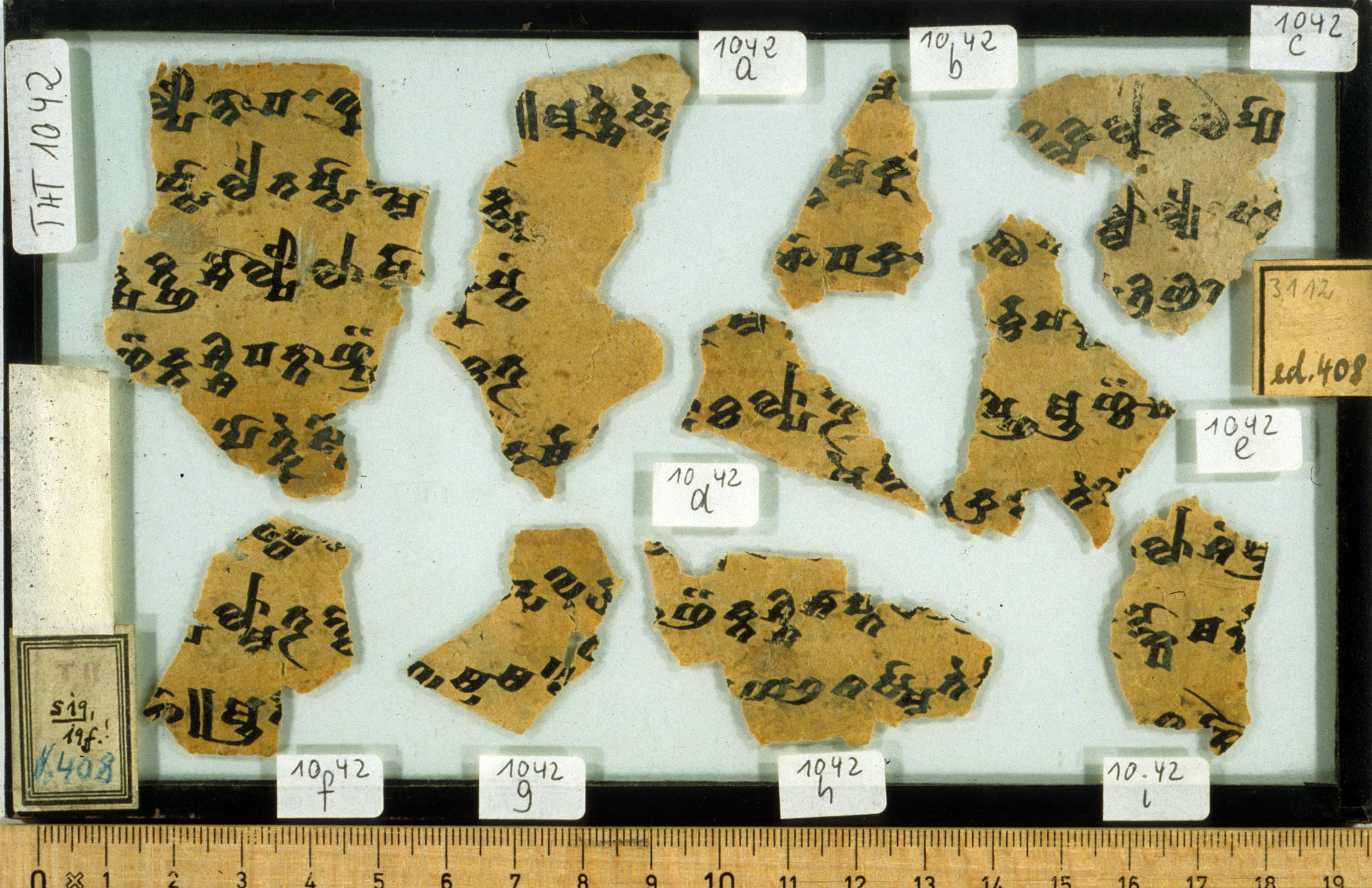Work in progress
A 408.h
| Known as: | A 408.h; THT 1042h; Bleistiftnummer 3112 |
|---|
| Cite this page as: | Michaël Peyrot. "A 408.h". In A Comprehensive Edition of Tocharian Manuscripts (CEToM). Created and maintained by Melanie Malzahn, Martin Braun, Hannes A. Fellner, and Bernhard Koller. https://cetom.univie.ac.at/?m-a408h (accessed 12 Jul. 2025). |
|---|
Edition |
| Editor: | Michaël Peyrot |
|---|
Provenience |
| Main find spot: | Sengim |
|---|
| Expedition code: | T II S 19.20, T II S 19.19f |
|---|
| Collection: | Berlin Turfan Collection |
|---|
Language and Script |
| Language: | TA |
|---|
| Script: | classical |
|---|
Text contents |
| Text genre: | Literary |
|---|
Object |
| Manuscript: | A 406-408 |
|---|
| Material: |
ink
on paper |
|---|
| Form: | Poṭhī |
|---|
| Size (h × w): | 3.2 × 5.1 cm |
|---|
| Number of lines: | 4 |
|---|
Images
Transliteration
| a1 | /// – – – – /// |
|---|
| a2 | /// – ñä kta śśi śā [p]t[ā] [s̝a] [l]a – /// |
|---|
| a3 | /// – ya¯ ¯l sa smā te ·[ā] /// |
|---|
| b1 | /// ·ra /// |
|---|
| b2 | /// [m]p· lka ssi mā c[ä] /// |
|---|
| b3 | /// [pu] kpa ttā ñä k[t]a[¯] [¯ñ]ä /// |
|---|
| b4 | /// – (–) – /// |
|---|
Transcription
Translation
| a1 | ... |
|---|
| a2 | ... he is to put a curse on the gods ... |
|---|
| a3 | ... is to be done. He ... not ... |
|---|
| b1 | ... |
|---|
| b2 | ... to torment (?) ... not ... |
|---|
| b3 | ... all Buddhas ... |
|---|
| b4 | ... |
|---|
Commentary
Remarks
Philological commentary
| n1 | tāṣäl: the akṣara s̝a is relatively secure; the l is only compatible with the traces, other restorations would also be possible. |
|---|
| n2 | sa : a faint cross is visible on top, but if an akṣara was added below the line, it is now completely lost. |
|---|
| n3 | /// [m] p·lkassi : the likely restorations seem to be (ca)m p(ä)lkässi 'to torment him' or (tā)m p(ä)lkässi 'to torment her'. However, we have to assume that the spelling was mpä with the vowel sign ä instead of expected mpa with Fremdzeichen (the alternative mpa is rare anyhow). |
|---|
References
Online access
IDP: THT 1042h
Bibliography
IDP
“The International Dunhuang Project: The Silk Road Online.” n.d. http://idp.bl.uk.




